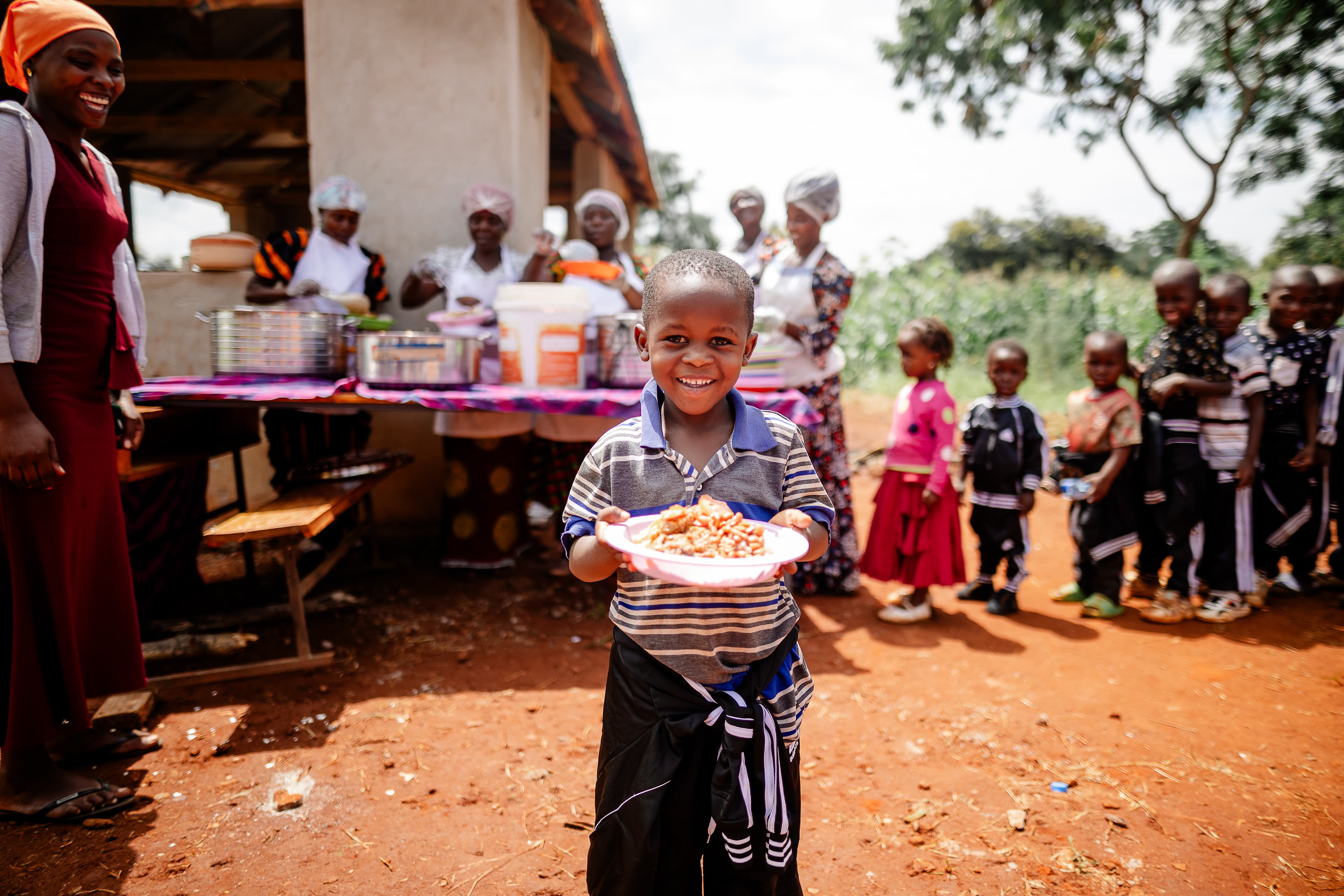What 5 Sponsored Children Eat
Food brings people together, and families living in poverty work hard to share what little they have. Despite doing all they can to put food on the table, many families still don’t have enough. This is where child sponsorship helps fill the gap. When a child is sponsored through Compassion, they receive regular nutritious meals and nutrition support. Compassion also provides emergency food packs for families facing greatest need. Look at what five sponsored kids around the world eat.
Daniel, in Nicaragua
Daniel, 10, lives in a rural Nicaraguan town with his grandparents. His brother, two cousins, aunt and uncle also live in the small home. One day’s worth of food for the family of eight includes beans, cooking oil, rice, bread and pinolillo (a traditional Nicaraguan drink made from corn and cacao). Each morning, Daniel’s grandmother fries two pounds of rice, which will be shared among the family over three meals.
The ingredients for the meal cost $3.41 — not much for most people. But Daniel’s grandfather makes only $26.60 per week. Their town offers few job opportunities besides farming or fishing. Since most families can’t afford fishing equipment or land, workers often have to spend much of their small income on renting a boat or farm. Daniel’s grandfather works someone else’s farm, milking cows and cleaning.
Because Daniel is sponsored through Compassion, he gets meals at his church-run center. Like other sponsored kids around the world, he also receives health checkups, tutoring, Bible lessons, medicine and other benefits.
Borisut, in Thailand
Seven-year-old Borisut eats breakfast with his parents and brother at their home in northern Thailand. His family now grows most of their food in their garden, where they also catch crickets to fry for snacks. Borisut remembers when their garden didn’t produce anything because his parents had no time to tend it. As they worked on other people’s farms for low wages, their garden dried up. They had to buy food from the market with their small earnings.
The church workers who run the Compassion center in Borisut’s community saw several families in similar situations: Although they were surrounded by lush land, they weren’t growing their own food on it. So, the staff started a community garden and invited sponsored children and their families to learn and grow together.
Borisut’s parents learned to grow healthy organic food through a workshop. They had time to participate in the workshop because their regular work dwindles after harvest and during the rainy season.
Sponsored children eat from the community garden at the center, and sometimes enough food is left for them to take home for their families. But Borisut’s parents don’t need food from the center’s garden — they used the skills they learned to revive their garden at home. The workshop taught them how to make their own compost and use it to grow an organic garden. They also learned how to rotate crops and reduce growing costs. Now Borisut’s grandmother helps care for the garden while his parents are at work, and his family has much more food security than before.
Agnes, in Indonesia
Agnes Janu Dwi Widiyanti, a sponsored 11-year-old on the island of Java, joins her parents and grandmother at their dinner table. On the table is the food for the week: rice, tempeh, tofu, catfish, eggplant, vegetables, beans, chili sauce and soup. This cost about 140,000 rupiah, or $10.55.
Imagine spending 55 percent of your income on groceries alone. That’s what life is like for Agnes’ father, Agustinus, who makes about $19 a week as a carpenter at a wood mill. That leaves little left over for other everyday expenses, not to mention emergencies that might arise. Because a church in Agnes’ village partners with Compassion, Agnes attends a center where she receives assistance with the needs her father cannot meet. Agnes’ sponsor gives the family confidence that she’ll be supported throughout her childhood.
Jasper, in the Philippines
Jasper, a sponsored 6-year-old, lives with his family in Benguet City, Philippines. For a typical meal, he eats steamed rice and a few green beans. For dinner, they will eat whatever rice is left.
Poor nutrition remains a problem in the Philippines. Lack of food affects how well children learn and grow. Often this damage is irreversible, reducing children’s chances of finishing school and gaining steady employment as adults. About 3.6 million children under 5 are underweight, and 4 million are stunted (or too short for their age), according to UNICEF.
Compassion sponsors and donors help reduce hunger. Our church partners provide nutrition help and groceries to pregnant women and parents of young children through the Child Survival Program. Sponsored children get healthy meals at their church-run centers. Struggling families also get extra food when they need it.
Alimatou, in Burkina Faso
Nine-year-old Alimatou often helps prepare ingredients for baag-benda, a sauce made from sorrel, a bitter leafy plant that tastes like tart strawberries. It is often cooked with oil and hot peppers and served with tô, a common meal eaten in Burkina Faso made from millet or cornmeal dough shaped into cakes or balls and cooked.
Roughly 20 percent of Burkina Faso’s population lives in food insecurity, meaning they don’t have enough food. Since about 90 percent of Burkinabe people work as subsistence farmers, their livelihood depends on good weather. Climate uncertainties like drought and floods can cause food shortages, leaving families hungry. The food served at Alimatou’s Compassion center greatly reduces the burden on her family.





